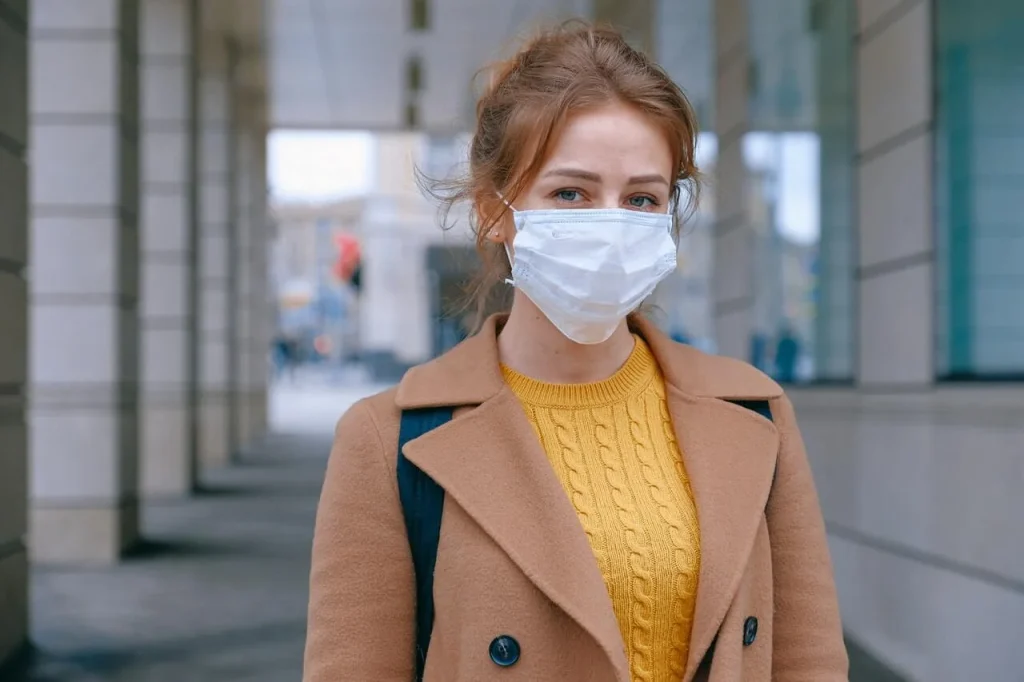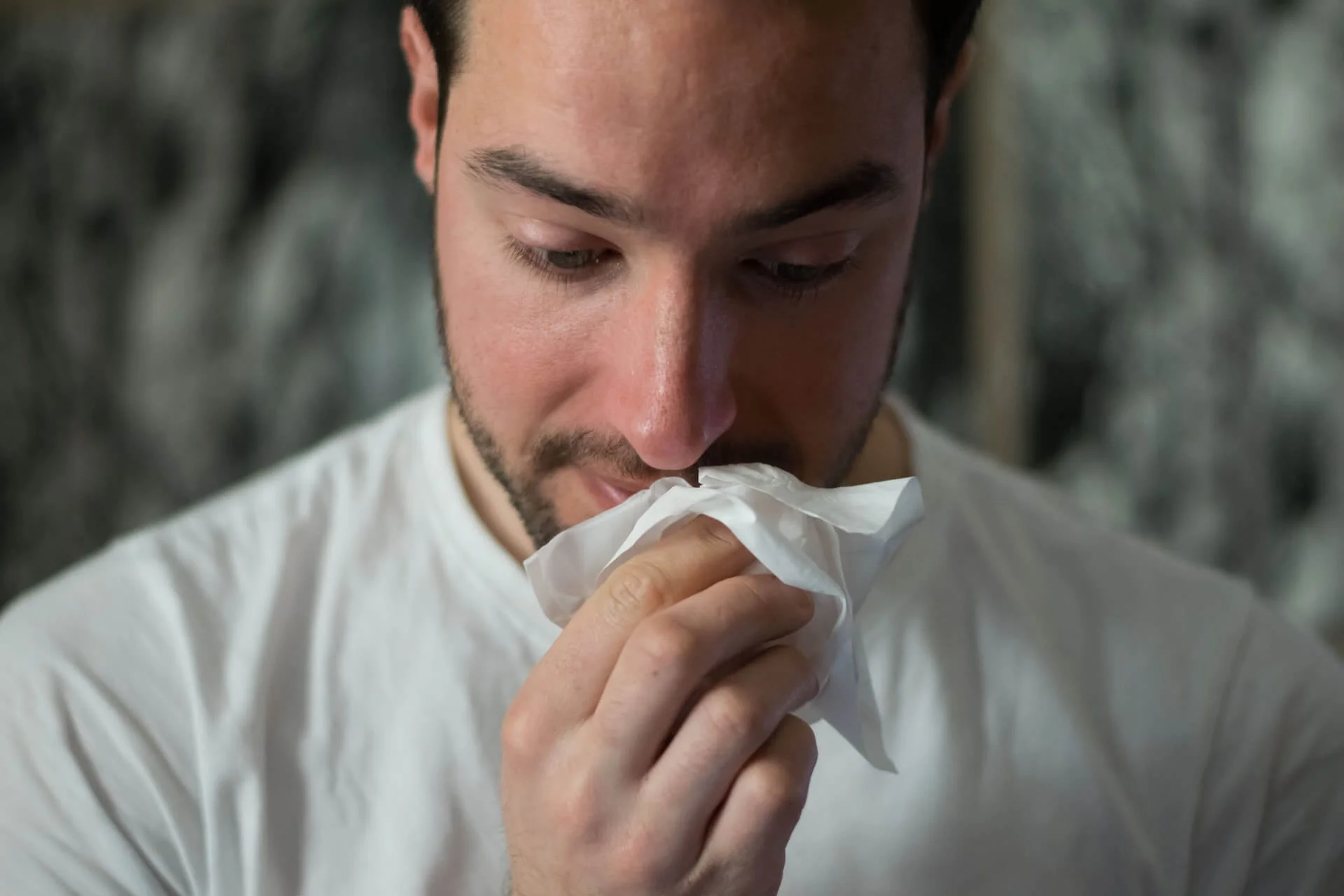2 years into the pandemic and we’re starting to go back to normal. A nasty flu season and the rise of seasonal colds have unfortunately combined with the new omicron variant of COVID-19 to create an infernal mix of viral infections this season. If your throat starts to itch and you start to feel fatigued, how are you supposed to know if it’s COVID-19 or if it’s just your average run-of-the-mill flu?
They are both contagious respiratory illnesses; the confusion is exactly what we’re trying to solve right now. In this article, we’ll be going over the differences between the flu and COVID-19 and how you can figure out your current status. Whether or not you’re currently feeling sick, it’s always a good idea to understand the differences between the illnesses and what specific symptoms could mean. You’ll find information from different websites here but take note that we took the extra caution to make sure that these are from reputable sources, including but not limited to the CDC, WHO, and our very own Department of Health.
Here’s what you need to know about the flu vs COVID-19.

What is the Flu?
Based on CDC’s definition, the flu is a contagious respiratory illness that’s caused by influenza viruses that infect the nose, throat, and sometimes the lungs. It can cause mild to severe illness and at times can lead to death. The best way to prevent flu is by getting a flu vaccine each year.
Influenza can cause mild to severe illnesses, and at times even lead to death. While very different from a cold, the flu usually comes in very suddenly despite showing similar symptoms such as a fever, cough, sore throat, runny or stuffy nose, muscle or body aches, headaches, fatigue, and even vomiting and diarrhea in some extreme cases.
A 2018 CDC study published in Clinical Infectious Diseases looked at the percentage of the U.S. population who were sickened by flu using two different methods and compared the findings. The study suggested that on average, about 8% of the U.S. population gets sick from flu each season, with a range of between 3% and 11%, depending on the season.
While a commonly cited 5% to 20% range exists, the estimate was based on a study that examined both symptomatic and asymptomatic influenza illness, which means it also looked at people who may have had the flu but never knew it because they didn’t have any symptoms. The new 3% to 11% range presented by the CDC is a result of the estimate from the proportion of people who have symptomatic flu illness.
How Can You Get the Flu?
Most experts believe that the flu virus spreads mainly by tiny droplets made when people with flu cough, sneeze, or talk and infect those nearby. These droplets can then land in the mouths or noses of people who are nearby. Less often though still possible, a person might get flu by touching a surface or object that has flu virus on it and then touching their own mouth, nose, or possibly their eyes.
The question now becomes: who is most likely to be infected with influenza? The same CID study found that children are most likely to get sick from flu and that people 65 and older are the least likely to get sick from infection, a finding in stark contrast to what we currently know about the COVID virus. Based on the CID study, the median incidence values for each age group stand at 9.3% for children 0-17 years, 8.8% for adults 18064 years old, and 3.9% for adults 65 years and older. Based on these statistics, we find that children younger than 18 are more than twice as likely to develop asymptomatic flu infection than adults 65 and over.
Again, this is an interesting find when we take into account the fact that COVID-19 patients were mostly older.
The probability of you getting the flu also depends on the time of year. The problem with statistical models in this area is that the influenza virus is so common that the number of people infected each season can only be estimated. The statistical estimations are also based on the CDC-measured flu hospitalization rates which are adjusted to produce an estimate of the total number of influenza infections in the United States for a given flu season.
As we said, 3-11% of the entire population will likely develop influenza within the year, with severity and infection rate varying depending on the time of year and if there are any existing viruses running rampant.

What is COVID-19?
COVID-19 is a virus that can cause mild to severe respiratory illness, including death in the worst cases. It comes from the family of viruses that can cause respiratory illness in humans. They are called “corona” because of crown-like spikes on the surface of the virus. There were many pre-existing examples of the coronavirus that we didn’t even know were related to COVID-19, examples include the Severe acute respiratory syndrome (SARS), Middle East Respiratory Syndrome (MERS), and the common cold are all very common examples of coronaviruses that cause illnesses in humans.
COVID-19, the new strain of coronavirus was first reported in Wuhan, China in December of 2019. The insane rate at which it infected and hospitalized people has since spread to all continents and infected millions of people around the globe. By October of 2021, for example, more than 196, 910,000 people in the world have been infected. Over 4,850,000 people have died and some 192 countries and territories on all cases have now reported cases of COVID-19.
This is a lot, yes, but the fact of the matter is that the number is just that the world has never seen a pandemic quite like this before. It’s understandable when we think about people and governments not understanding how we were supposed to react to the pandemic.
How Can You Get COVID-19?
Similar to the flu, COVID-19 enters your body through the mouth, nose, or eyes (directly from the airborne droplets or from the transfer of the virus from your hands to your face. After entering your system, the virus then travels to the back of your nasal passages and the mucous membrane in the back of your throat. It attaches to cells there, begins to multiply, and moves into lung tissue. Once it’s done all this, the virus can then quickly spread to other body tissues.
The COVID-19 virus is likely to spread through other measures as well such as close contact with an infected person and then touching your person or even after touching a contaminated surface prior to touching your eyes, mouth, or nose before washing your hands. Though the latter is unlikely, the virus travels in respiratory droplets released into the air when an infected person coughs, sneezes, talks, sings, or even breathes near you.
Coronaviruses and their mutations are often found in bats, cats, and camels. The viruses live in but do not infect the animals. From here, these viruses can then spread to different animal species. The virus may change as it transfers to other species and these mutations are exactly what causes illnesses within humans. At some point, the virus can jump from animal species and begin to infect humans. In the case of COVID-19, the first person infected was infected in Wuhan, China after said person contracted the virus through a food market that sold meat, fish, and live animals.
Further mutations of the variants exist and these mutations are the virus’ methods of continuing to combat the body’s antibodies and further infect other people. After all, as an organism, its goal is to procreate and continue to exist, right? That said, sometimes, the variants are less contagious, less severe, or exhibit differing symptoms to people. Unfortunately, previous mutations such as the delta variant are more contagious and more likely to result in severe illness.

Symptoms of COVID-19 and the Flu
Though COVID-19, influenza flu, and the common cold are all caused by different viruses, many of their symptoms actually overlap.
It is extremely possible for a person to be infected with more than one virus at a time. Take, for example, flurona – which has been making its rounds online. Doctors have long been concerned about the potential impact of a twindemic – with influenza cases around the world rising as COVID-19 cases threaten to overwhelm hospitals. Long story short, people are getting called on to get flu shots as well as their coronavirus vaccinations to help prevent the spread of the viruses further.
But that’s beside the point. Let’s go back to talking about the common symptoms between the flu and COVID-19.
It’s important to think first about the overlapping symptoms before going into differences – although the loss of taste or smell has always been the defining unique symptom of COVID-19 early on in the pandemic, it’s quite less common now with the currently dominant omicron variant.
Other unique symptoms between the flu and COVID-19 are fever, fatigue, body aches, and difficulty breathing. A runny nose, vomiting, and sneezing are also occasional symptoms that may or may not signify COVID.
If you feel sick with any of these symptoms, it’s best to isolate yourself right away. You can spread the flu and COVID-19 one day after being infected. Keep in mind that these symptoms may be signs of other viruses and once you first detect these viruses, you should be ready to call your local healthcare professional.
What to Do When You Come Into Contact With Someone With Either COVID-19 or Flu
After coming into contact with someone with either the flu or COVID-19, you might want to do some of the following:

Wash your Hands
Washing your hands is a simple and effective way to make sure that the virus doesn’t spread to any openings that your body may have, this, of course, includes eyes, mouth, and nose. It kills the virus and makes sure that it doesn’t spread to other surfaces that you may touch in the future. Thorough and frequent hand-washing or even just cleaning your hands using an alcohol-based sanitizer are effective ways to prevent the spread of the virus.
Contain Your Coughs and Sneezes
Since the beginning of the pandemic, everyone’s been raving about wearing a face mask and this product dusk is allowed you to cover your mouth or nose when you sneeze or cough, and wash your hands after. If you don’t have a face mask but still wish to avoid contaminating your hands or other people, it would be best to cough or sneeze into a tissue or into the inner crook of your elbow.
Generally, Avoid Groups of People
This concept is simple: you can’t get sick if you don’t come into contact with other people. By simply avoiding groups of people and social gatherings, you’re instantly reducing the chances of infection and spreading to others. If you’re sick with the flu or have feverish symptoms, it would be best to stay home for at least 24 hours after your fever subsides to lessen your chance of infecting others.

Wear A Mask and Practice Social Distancing
Like we said before, wearing a mask is an easy and immediate way to protect others and yourself. If you must leave your homes, such as to get medication or groceries, you should look to wear a mask and maintain at least a 6-foot span between you and others. This is the recommended distance by the CDC and WHO to maximize safety and reduce the chances of getting sick through respiratory droplets in the air.
Once you are no longer infectious, it’s important to get vaccinated for COVID-19 and flu. You can then get both shots at the same time. A flu shot is recommended for all patients 6 months and older. A COVID-19 vaccination is recommended for all patients 5 years and older.
Related Blog: COVID-19 Safety What to Do When You’ve Tested Positive or Been Exposed To COVID


